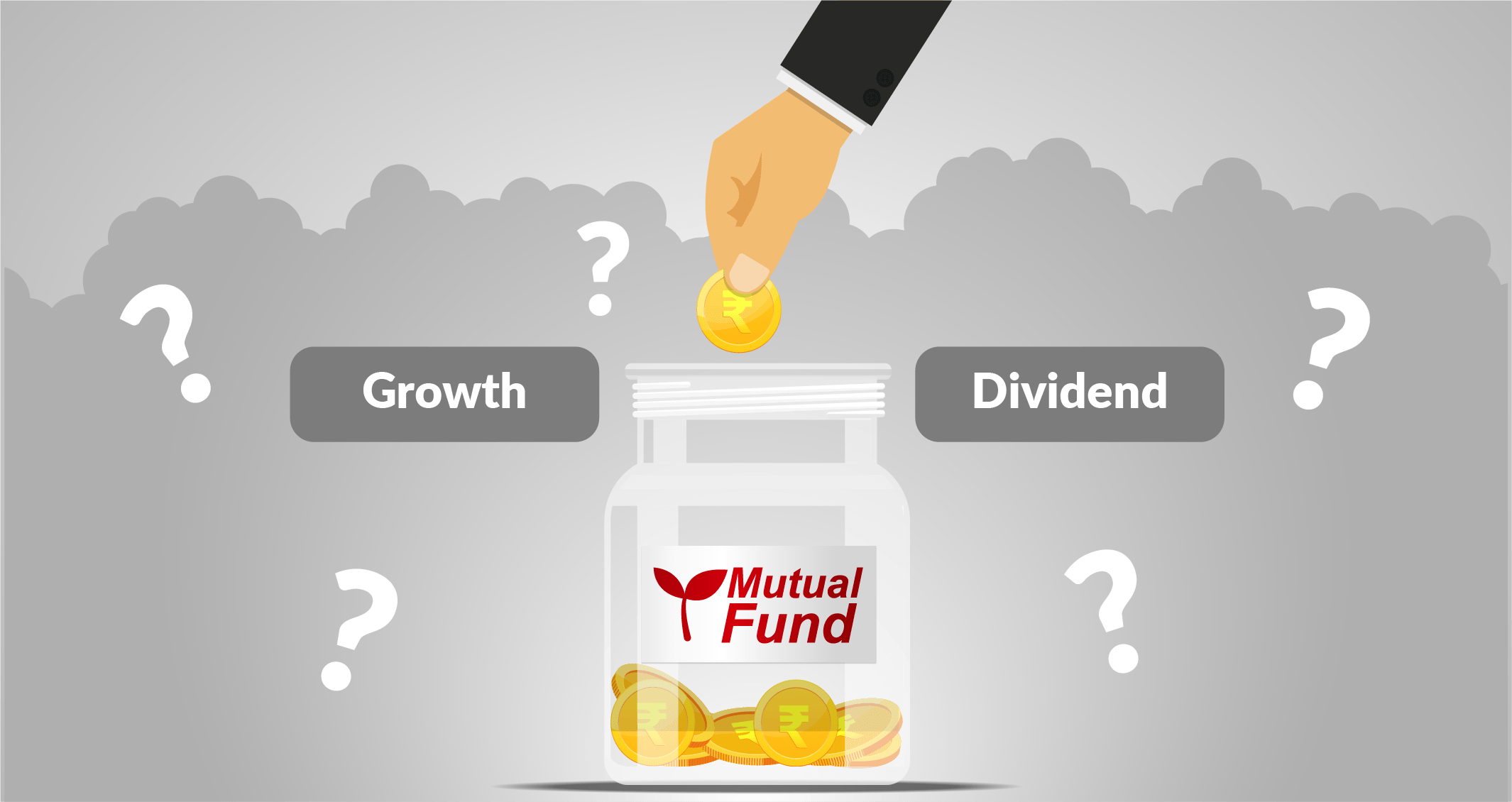How to Choose the Right Mutual Fund Payout Option?

Investing your savings in mutual funds might be very rewarding, as these investment portals regularly hand out returns, commonly known as dividends. Choosing a mutual fund payout option means that you, as an investor, must determine what you wish to do with these dividends. Do you want to redeem them at regular intervals as and when they are awarded? Or do you want to stay invested in the scheme for the long term and collect the appreciated returns after the scheme has matured over the years?
Are you someone who just recently stepped into the world of mutual fund investments? You might want to learn what the implications of the abovementioned payout options are. Scratch your head no more, as you are in the right spot! Through this article, we will systematically expound on the different payout options that you, a mutual fund investor, can choose between and how this decision will impact you financially in the near future.
Dividend Vs. Growth
Mutual funds come with two options: the dividend and the growth plan. Choosing between the two requires putting much thought into your financial goals, what you want to achieve through your investments, and your risk appetite etc. Thus, picking between the dividend and the growth payout option is a lot more complicated than it seems.
Please note that though both are different in nature, their portfolio returns are the same. However, what differs in each case is the number of units owned, cash flows, payouts, liquidity, and taxability.
Dividend:
If you opt for this payout option, your mutual fund dividends will be declared after specific intervals of time. Moreover, as an investor, you can choose to have your dividends cashed, or reinvest the capital into the scheme again. However, it is crucial to understand that when you reinvest the capital, you will be allotted more units than you initially invested.
Growth:
If you choose this payout plan, the dividends earned upon your investment won’t be declared. You will not receive any money in your bank account either. All that will happen is that you’ll get to hold onto the investment units until they are sold. When this happens, the fund will have reached maturity over the years, and you’ll receive the total value of your assets.
An alternative to payout — Dividend Re-investment:
If you opt for this alternative, you will reinvest your dividend earnings to purchase more stocks of the company. By doing so, you can enjoy a compounding effect on the investment, wherein your capital might appreciate exponentially over the years.
Some vital points of difference between the two
1. Net Asset Value (NAV)
In the case of a dividend payout scheme, the number of asset units you hold doesn’t change whatsoever. But it is to be noted that the price per unit, also called the Net Asset Value (NAV), diminishes to match the extent of the mutual fund payout. If you choose to reinvest your dividends in the scheme, then the NAV reduces, and in exchange, some more units are allotted under your name.
On the other hand, since no dividends are declared when you opt for the growth payout plan, the number of fund units owned remains unchanged. The NAV gains over time to attain its total value (which can result in profits or sometimes even losses).
2. Liquidity
Going for the dividend payout scheme, gives you greater liquidity for your assets, as they can be encashed whenever you declare them.
In the dividend re-investment and growth options, the liquidity of the asset is significantly compromised. It is also important to understand that some mutual fund schemes might offer a Dividend Transfer Plan (DTP) feature. Under this option, the dividend that you earn in one scheme can be invested in another scheme belonging to the same mutual fund. But this option is available only when you opt for the dividend option.
3. Taxability
Speaking of taxability, there’s no Dividend Distribution Tax (DDT) for the dividend payout option. However, the income earned through the dividends is taxable, with it being added to your total taxable income at the end of each year.
When you go for the growth option, any profits/ capital gains enjoyed upon the sale of the mutual fund units will also be taxed under the capital gains tax law. This will, however, be subject to the type of the scheme.
Things to consider before choosing a payout option
If you are an investor seeking regular source of capital, then you should go for the dividend payout option. But dividends such as these are only paid if the scheme earns a significant distributable surplus. This means that the dividends are paid out only when the overall profits of the scheme are greater than the losses incurred during that time. Thus, one can say that mutual fund dividend payouts are neither consistent nor guaranteed.
Moreover, when you’re analysing your scheme’s performance, in case of the dividend option, you must make sure that you compare it to the benchmark index’s Total Return variant (TRI), rather than to the Price Return variant of the index (PRI). This is advisable because the PRI only conveys the capital gains of the index constituents, whereas the TRI considers interest and dividend payouts.
So, in a nutshell, if you’re an investor who seeks liquidity, is exempted from paying taxes, or you fall into the lowest tax bracket, then opting for the dividend payout option is feasible. However, if wealth creation over time is your goal, then you can opt for the dividend growth option, thereby avoiding short-term capital gains tax. Lastly, if you want to pit your capital gains/losses against other losses or gains, then you should choose the dividend re-investment alternative.
Blog Categories
Enter Your OTP




